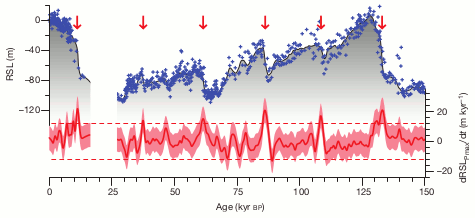Old Rocks
Diamond Member
So, you say that sea level rise is not a problem, and all the scientists studying it state that it is. Oh, who to believe?Didn't you already disqualify yourself from this discussion when you claimed beach erosion was at fault. You are obviously biased on this issue and appear to be just flinging feces at the wall in hope that something will stick. This is a real problem for people in Florida that needs real solutions.In South Florida, the rate of sea-level rise has tripled over the last decade, according to a new study from the University of Miami.An underwater home typically refers to a mortgage that is higher than the property's value. But as rising seas are expected to increasingly flood South Florida, scientists and economists have warned that the term might be taken literally one day.
A new study recently released by Zillow, the online real estate database, has quantified the effect of sea level rise on property values, and the findings are startling: $413 billion worth of properties are at risk of being at least partially submerged in Florida by 2100 — the most of any state, accounting for half of the nation's total projected $882 billion worth of property at risk of being flooded.
"That could even be a low number," says Stephen Tilbrook, an environmental lawyer based in Fort Lauderdale. "We haven't developed an understanding for a lot of impacts of sea level rise yet."
For years, experts have speculated that rising waters will instigate another housing crisis. Of course, the shock of a sea-level-induced market crash will be felt the worst in Florida, where one in eight houses is at risk of being at least partially underwater if sea levels rise six feet by 2100. There has been some discussion about brokers considering the effects of sea level rise before issuing 30-year mortgages and realtors disclosing flood risk to potential buyers.
Sea Level Rise Could Cost Florida $400 Billion in Property Loss
I think that is a far too optimistic estimate of the real estate losses that are going to happen in Florida due to sea level rise. There will be a great many people that will simply walk away from their mortgages, and land that is low, but not flooded at that time will loose most of it's value.
"COULD"
As Waters Rise, Miami Beach Builds Higher Streets And Political Willpower
Will happen.
Wow. Would you look at that. They used MEDIA REPORTS and INSURANCE CLAIMS to "quantify" their "study". And you claim this is science. Get real...
"To quantify the flood hazard in Miami Beach, the UM Rosenstiel School researchers analyzed tide and rain-gauge records, media reports, insurance claims, and photos of flooding events on Miami Beach and in Miami since 2006. The insurance claims and media reports helped the researchers pinpoint the date and type of flood events."
I agree it is a real problem. A problem that has been known about for decades. It is a combination of factors and sea level rise isn't one of them.


